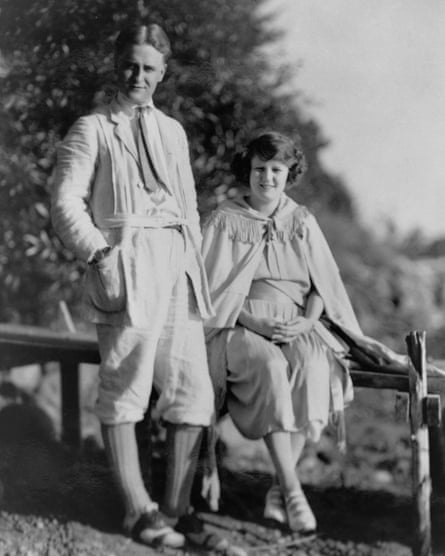It is the quintessential novel of the hedonistic jazz age, a roaring 20s story about the mysteriously wealthy Jay Gatsby and his love for the beautiful Daisy Buchanan. The Great Gatsby became an enduring classic, inspiring films and musicals, but received such mixed reviews in 1925 that its disappointed author, F Scott Fitzgerald, was all the more excited when it inspired a Broadway adaptation.
The 1926 dramatisation by Owen Davis, a Pulitzer prizewinner, opened to rave reviews and became a hit that contributed to the novel’s success, bringing Fitzgerald substantial royalties and fame.
But the original script had long since been lost. Now a copy has been rediscovered and will be published for the first time by Cambridge University Press – and it reveals that Davis took many liberties with Fitzgerald’s storyline.

Nick Carraway is no longer the narrator, new characters are invented, and Jay Gatsby’s past, which is revealed gradually throughout the novel, is presented all at once near the start. “Davis made some interesting changes,” said Anne Margaret Daniel, co-editor of the new publication. “He introduces some of the gangster characters who are in Gatsby’s underworld. He makes it very clear that Gatsby is in the business of organised crime, which is an apt reading of the book and, of course, it makes it more dramatic on stage.
“It’s a fascinating version of Gatsby. It absolutely captures the Jazz Age heat.”
The script had lain unnoticed for almost 100 years in a US archive. Daniel began searching for it after finding a fragment among Fitzgerald’s papers at Princeton University, along with unpublished production photographs. She eventually unearthed the complete script at Colorado State University, among papers from a study of Davis’s work that was never completed.

The script, which belonged to an actor in the Broadway staging, will be published for the first time on 25 April in the forthcoming book The Great Gatsby – The 1926 Broadway Script, edited by Daniel and James L W West III.
“It’s significant because this is the first time that The Great Gatsby was put on the Broadway stage, and thousands of people encountered the story for the first time,” said West.
“I would like to see it restaged – though The Great Gatsby is right now in the works as a Broadway musical and there’s also been an opera, a ballet and three movies at least.”
He added that, while Fitzgerald had been “protective” of the novel, he was excited by the staging, having seen an early draft and telling his agent in 1926 that it “put in my pocket seventeen or eighteen thousand without a stroke of work on my part”.
Fitzgerald had kept extensive material relating to Gatsby, and his archive at Princeton includes reviews of the novel and the Broadway production, sent to him by Max Perkins, his great editor at Scribner, and his agent, Harold Ober, as the writer was in Europe at the time.
Daniel said: “In his correspondence with Perkins, you can see that he was thrilled that it was being done. He was disappointed with the critical reception to Gatsby. He knew how good it was, but it got some stinky reviews. Some reviewers complained about the morality.”
In their introduction, she and West write that, if Fitzgerald had been allowed to attend rehearsals, “he would undoubtedly have been a pain in the neck”.
“In fact, anyone who reads the script today will probably react as Fitzgerald would have. The Great Gatsby has become a secular scripture, a verbal icon,” she said. “Many of us have read … the novel so often that we have it almost by heart. We should remember that, in 1926, The Great Gatsby was not yet a classic.”










